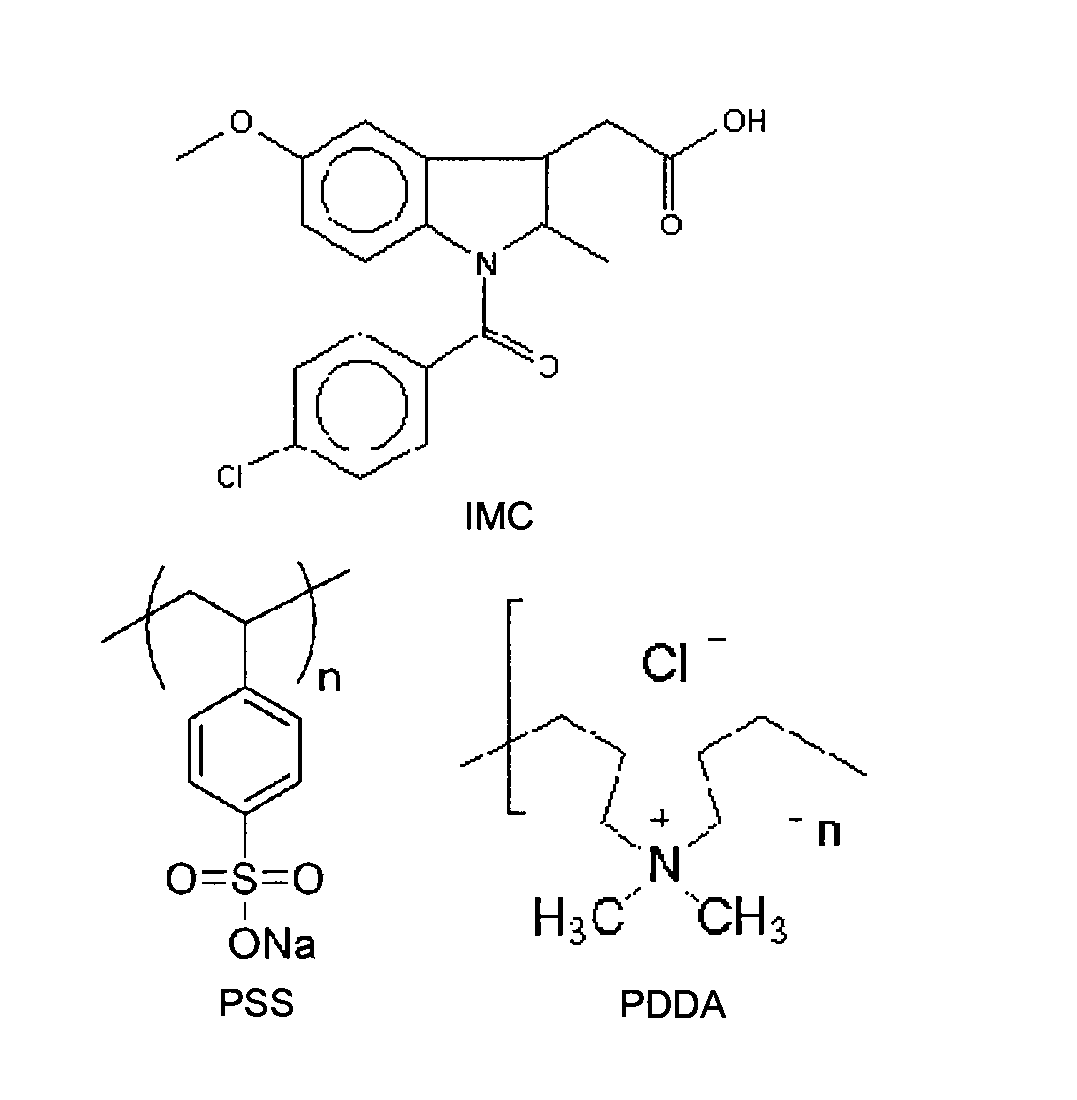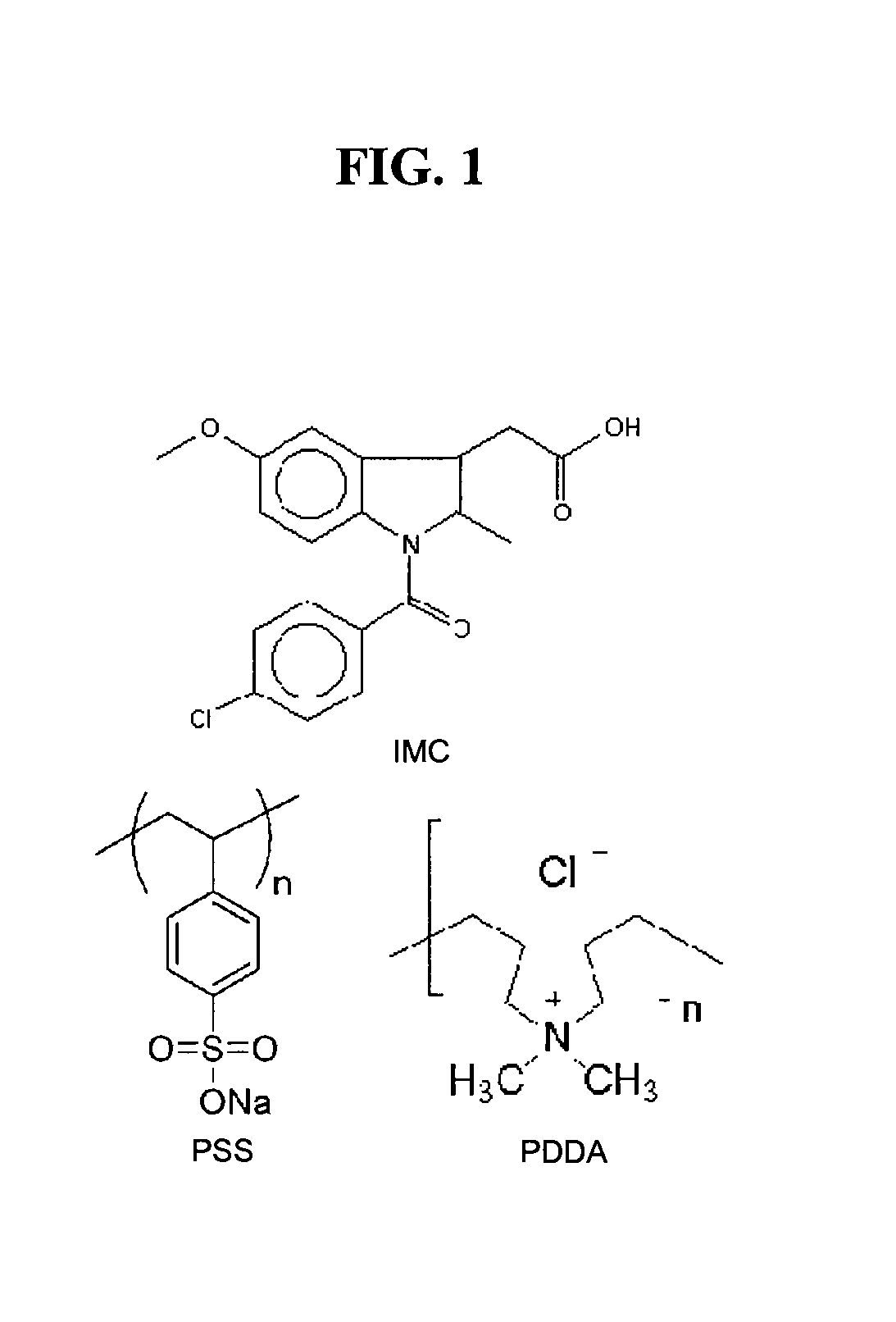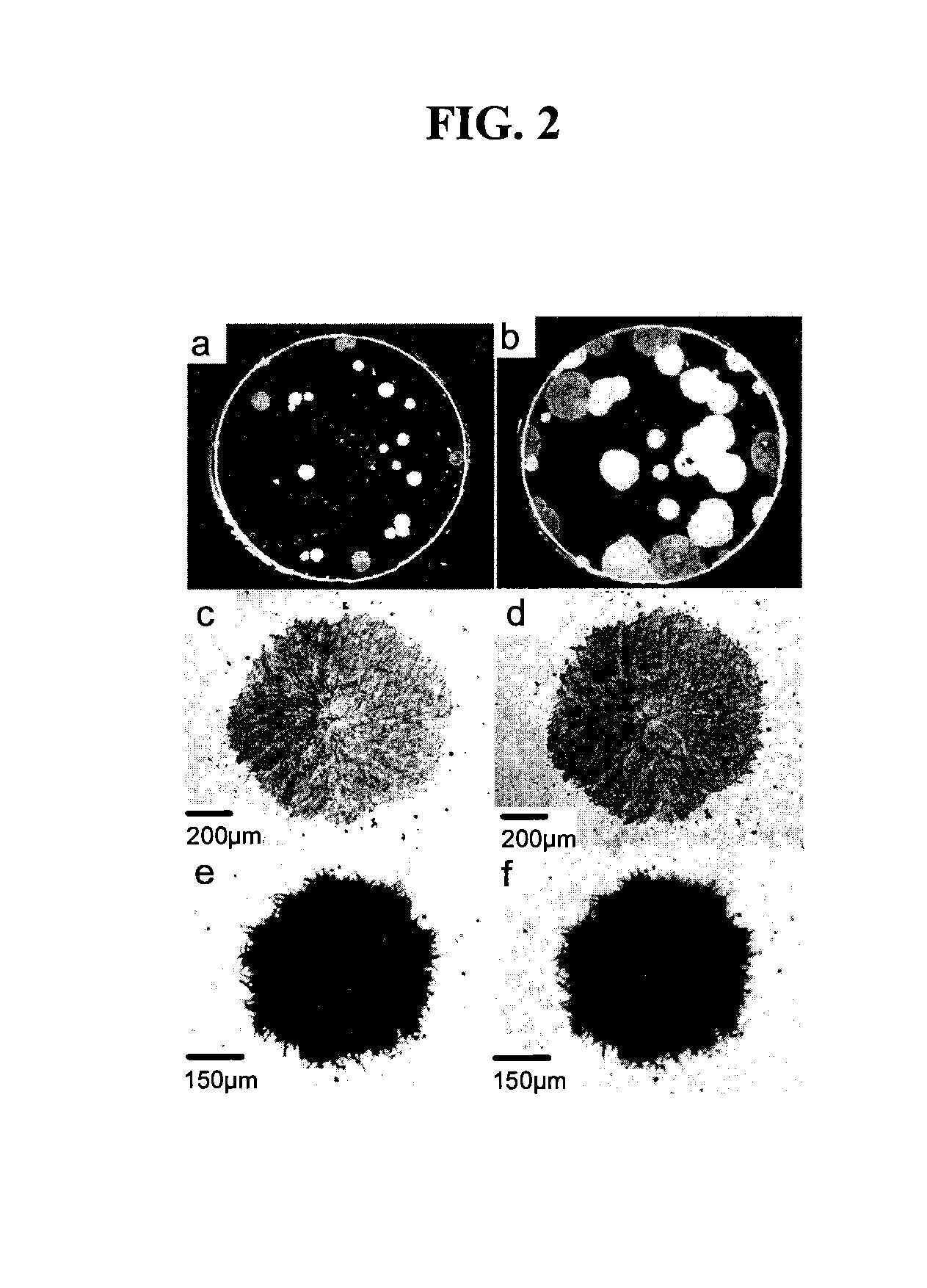Inhibiting surface enhanced crystallization of amorphous pharmaceuticals with ultrathin coatings
- Summary
- Abstract
- Description
- Claims
- Application Information
AI Technical Summary
Benefits of technology
Problems solved by technology
Method used
Image
Examples
example 1
Surface Crystallization of Uncoated and Gold-Coated Amorphous IMC Films
[0043]Amorphous IMC film prepared between two microscope cover glasses does not crystallize for months below Tg (42° C.). Even in the presence of crystal seeds (introduced by partial melting of crystals and quenching), crystals grow slowly, at ca. 10−11.3 m / s at 40° C. (Tg−2° C.). In contrast, if one of the cover glasses is removed to expose a free surface, crystals appear in days at 40° C., growing at 10−8.9 m / s in the polymorph and 10−9.8 m / s in the polymorph during the first week. The crystals were found to be several μm thick by cross-sectioning. FIG. 2a shows a typical uncoated film after 90 hrs at 40° C.; the round opaque spots are IMC crystals on an otherwise transparent glass film. The crystals were birefringent. FIG. 2b shows the same film after 11 days (7 days after FIG. 2a), in which the crystals had grown larger. After two or three weeks, the surface was fully covered with crystals. A comparison of ...
example 2
Surface Crystallization of Uncoated and Polyelectrolyte-Coated Amorphous IMC Films
[0045]Before coating amorphous IMC by this method, the sign of its surface charge in a coating solution was determined. Zeta potential measurements showed that amorphous IMC was negatively charged (ζ-potential=−41 mV, measured as particles suspended in a 0.01 M NaCl). This negative surface charge is consistent with IMC's pKa (4.5), which ensures that a fraction of IMC molecules are deprotonated at pH≈7. (The pH of the coating solutions was 6.1 (PDDA) and 6.4 (PSS)). Under the same condition, crystalline particles of IMC (γ polymorph) were also negatively charged. Because of this negative charge, the first layer of coating on amorphous IMC was performed with the positively charged PDDA, the next layer with the negatively charged PSS, and so on. FIG. 3, which shows how the zeta potential of amorphous IMC particles changed with the adsorption of alternating layers of PDDA and PSS, confirms deposition of t...
example 3
Surface Crystallization of Uncoated and Polyelectrolyte-Coated Amorphous IMC Powder
[0048]FIG. 6 shows the effect a single layer of PDDA on the crystallization of a powder of amorphous IMC (ground and sieved through a screen with 75 μm openings). As shown in FIG. 6b, the uncoated powder crystallized into γ IMC after 2 days at 40° C., changing from yellow (amorphous) to white (crystalline). As shown in FIG. 6a, the coated IMC powder remained amorphous after 20 days at 40° C. and was still yellow.
[0049]As shown in FIG. 7, a DSC analysis also demonstrates that a PDDA coating inhibits surface crystallization. The crystallization of amorphous IMC, when heated, caused the exotherm to approach 90° C. The larger the exotherm, the greater the amorphous fraction before DSC analysis. For an uncoated powder (the bottom three curves in FIG. 7), the exotherm typically disappears after 2 days of storage at 40° C. By contrast, the exotherm for the coated powder (the top three curves in FIG. 7) was l...
PUM
| Property | Measurement | Unit |
|---|---|---|
| Time | aaaaa | aaaaa |
| Thickness | aaaaa | aaaaa |
| Thickness | aaaaa | aaaaa |
Abstract
Description
Claims
Application Information
 Login to View More
Login to View More - R&D
- Intellectual Property
- Life Sciences
- Materials
- Tech Scout
- Unparalleled Data Quality
- Higher Quality Content
- 60% Fewer Hallucinations
Browse by: Latest US Patents, China's latest patents, Technical Efficacy Thesaurus, Application Domain, Technology Topic, Popular Technical Reports.
© 2025 PatSnap. All rights reserved.Legal|Privacy policy|Modern Slavery Act Transparency Statement|Sitemap|About US| Contact US: help@patsnap.com



